It is always fun to look back on season predictions that were made back in August. Sheffield United were pipped to be in a relegation battle because of the thought that their style in the Championship would not translate well in the Premier League, Manchester City were seen as the clear favourites for the title, after having a better summer than Liverpool in terms of signings, and West Ham United were seen as a lock for a top 10 finish. Twenty-nine gameweeks later, Sheffield United are comfortably in seventh place, two points above Tottenham Hotspur, Liverpool are 25 points ahead of Manchester City, and West Ham are in serious trouble when looking at the relegation battle. They are currently in 16th place, but have the same amount of points as both Watford and Bournemouth, the two teams who are in 17th and 18th place respectively. The only thing that is keeping them out of the relegation zone right now is their goal difference, which sits at -15. This season, West Ham have conceded 50 goals, only Southampton, Aston Villa and Norwich City have conceded more.
This is troubling though because West Ham were pipped to finish in the top half of the table this season, while expectations for the other three teams were significantly lower going into this season. While their attack could be better, West Ham have scored enough goals this season; it really has been their defence that has let them down. This tactical analysis will be a scout report looking at why West Ham’s defence has been struggling this season.
Usual Set-up
West Ham, regardless of the set up of their midfield, almost always play with a back four. In the Premier League this season, they have played with a system that includes a back four 71% of the time. Before his firing, Manuel Pellegrini often set up West Ham in a 4-1-4-1. His successor, David Moyes, has been a bit more fluid with his formations, experimenting with a 4-2-3-1, and a 4-4-1-1, but ultimately, his tried and trusted is a 4-4-2.
However, regardless of the formation that Moyes sets up West Ham in, they just seem to keep conceding goals and chances.
Passiveness
One of these reasons is the lack of aggressiveness while defending. They average 12.28 shots against them per game. This number is so high because the defenders are often unwilling to be aggressive against attackers, and usually will allow them to take the shot, in hopes that the shot will not be on target or that Łukasz Fabiański will be able to save it.
This lack of aggressiveness is not only the fault of the defenders. It starts from the midfield that is ahead of them. A midfield that is passive is dangerous; if the midfield is not taking initiative, the defensive line will be lax too, and more shots will come in. More shots equal a higher chance of the opposition scoring goals, obviously.
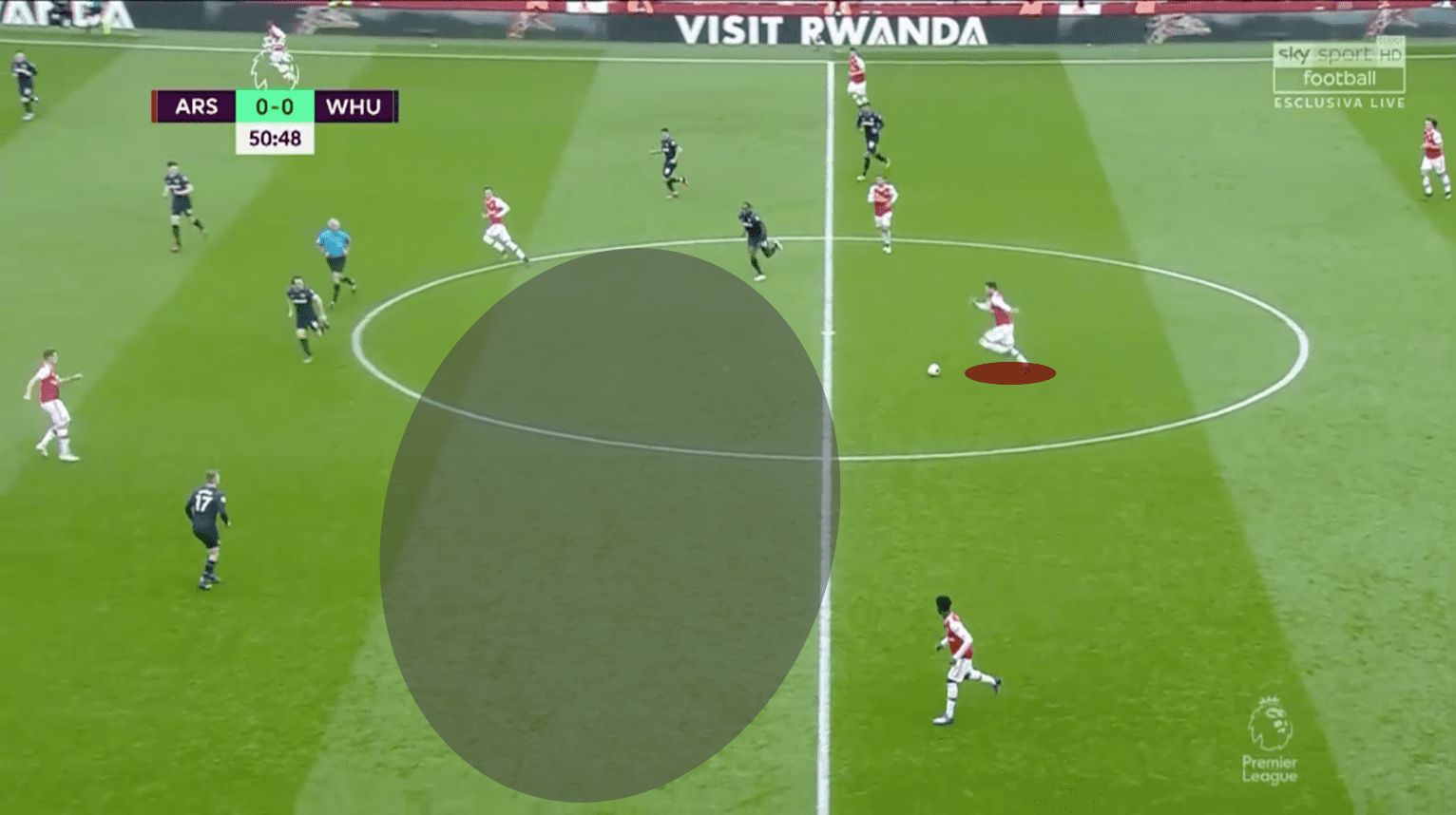
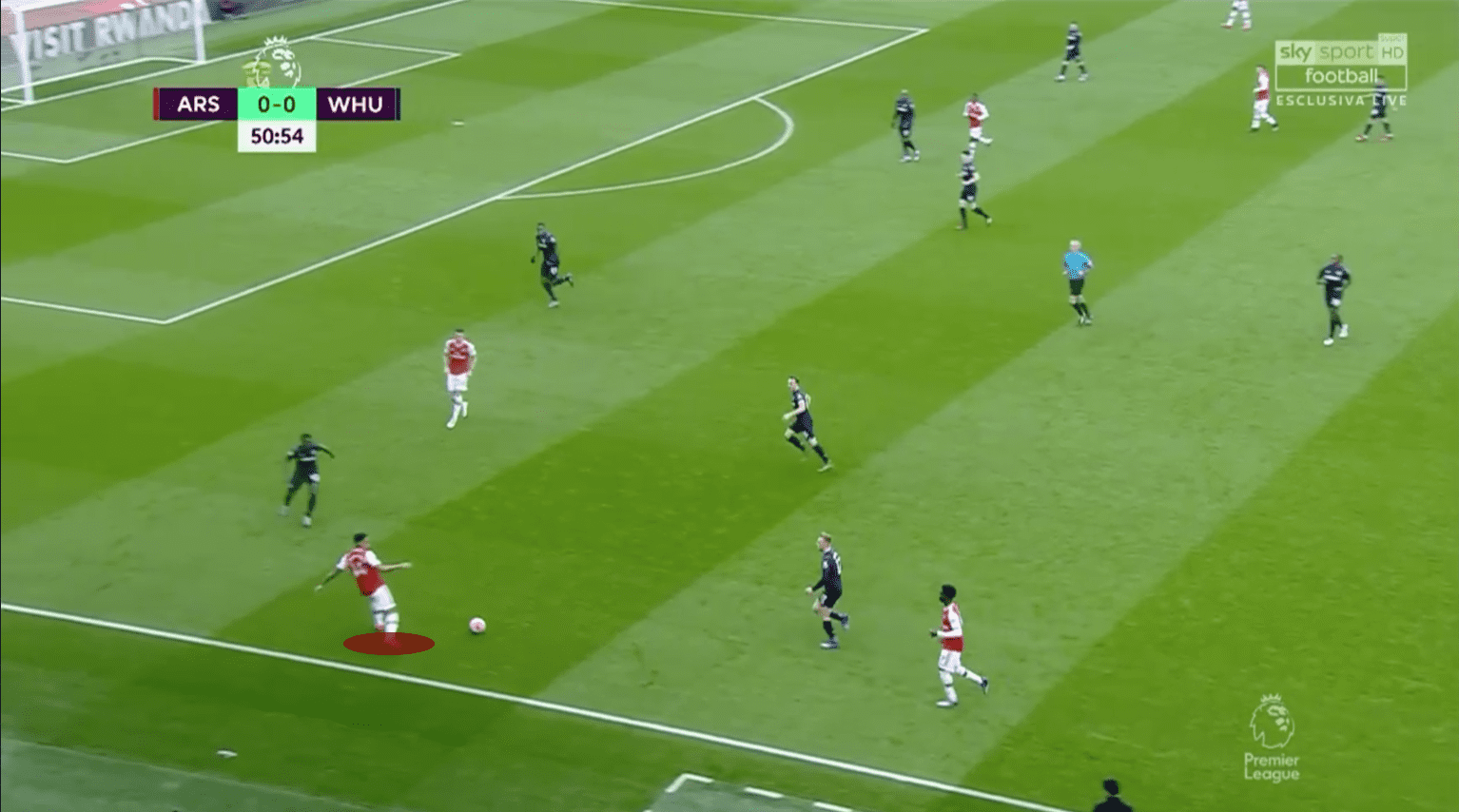
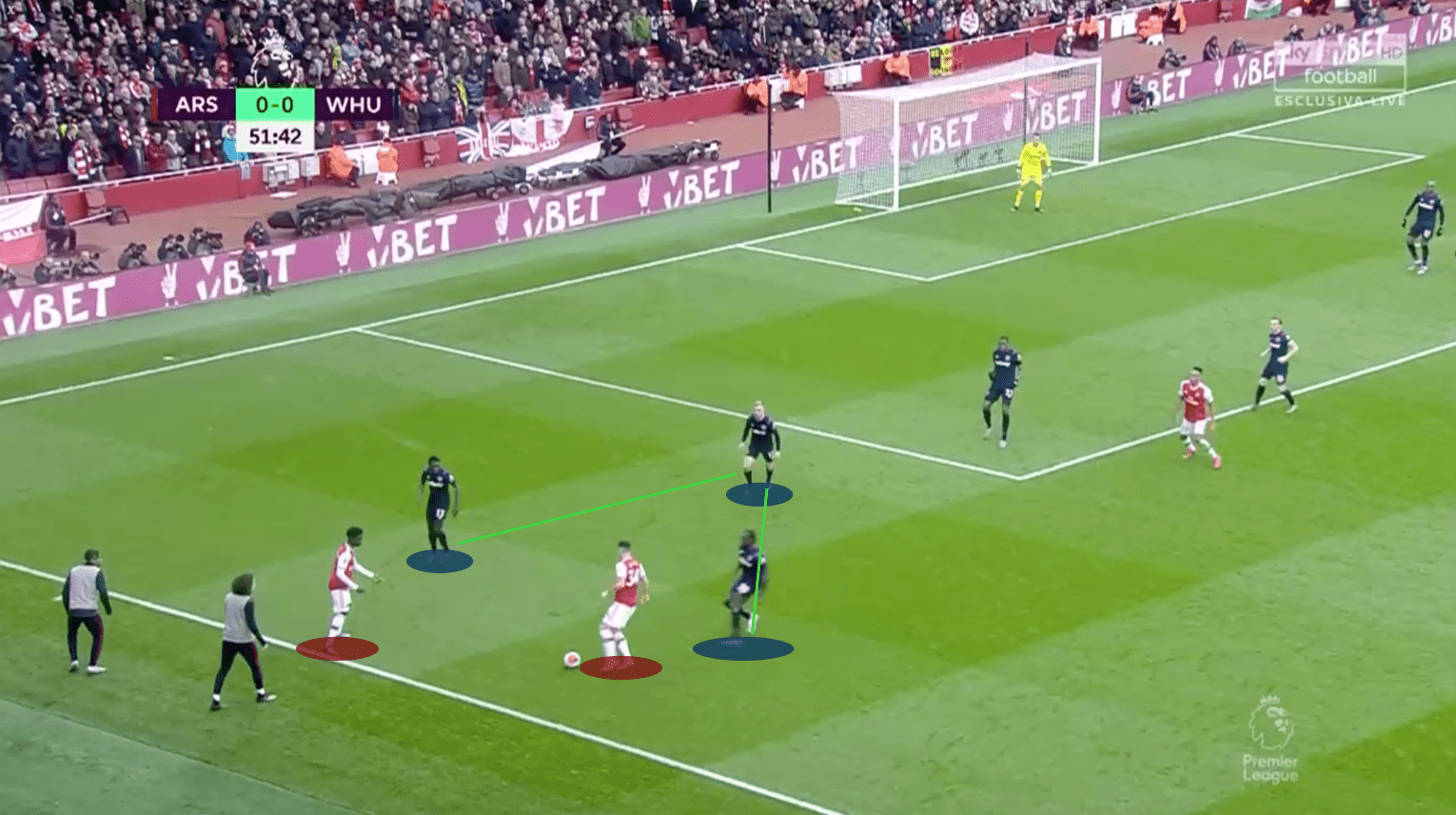
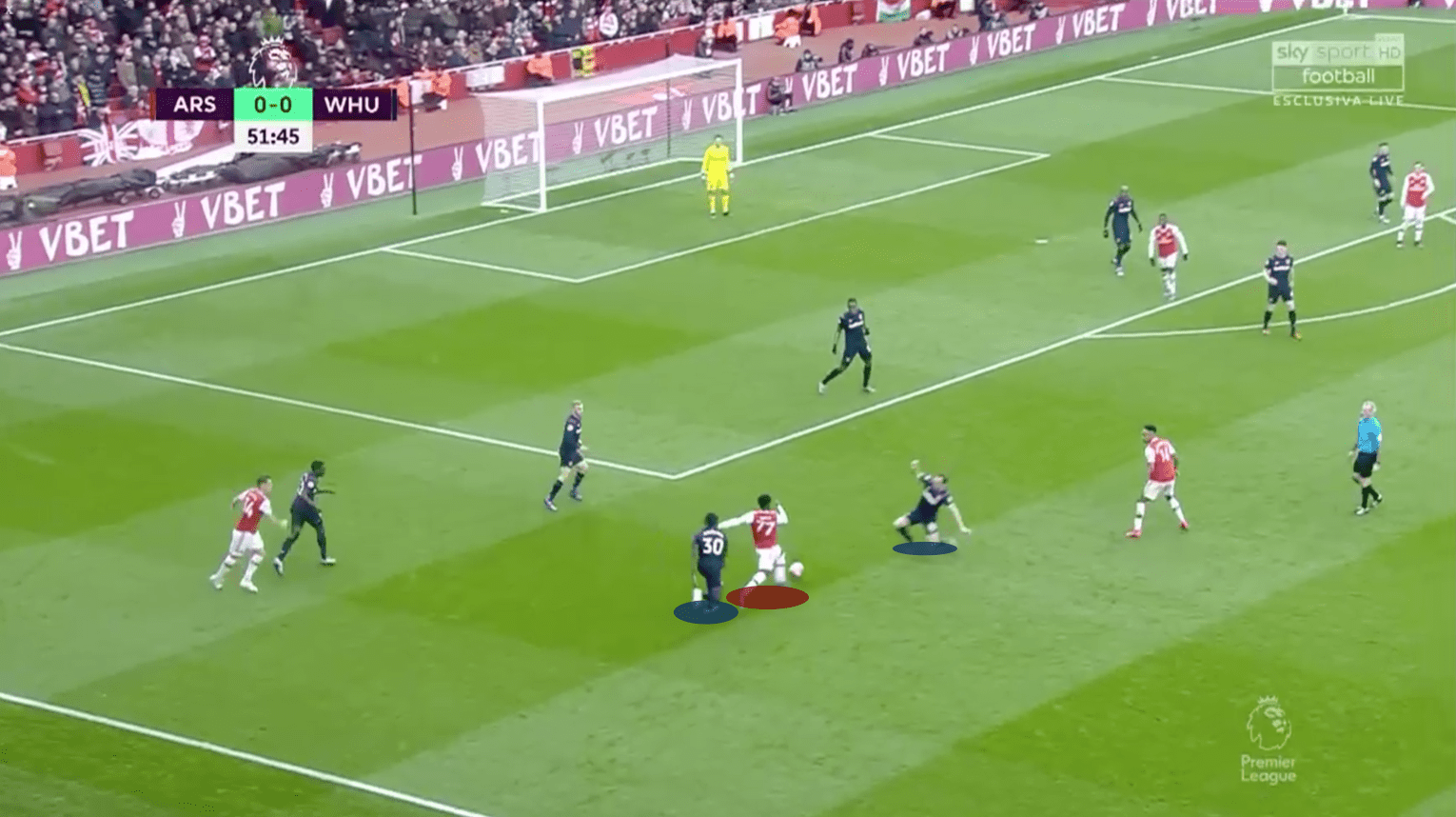
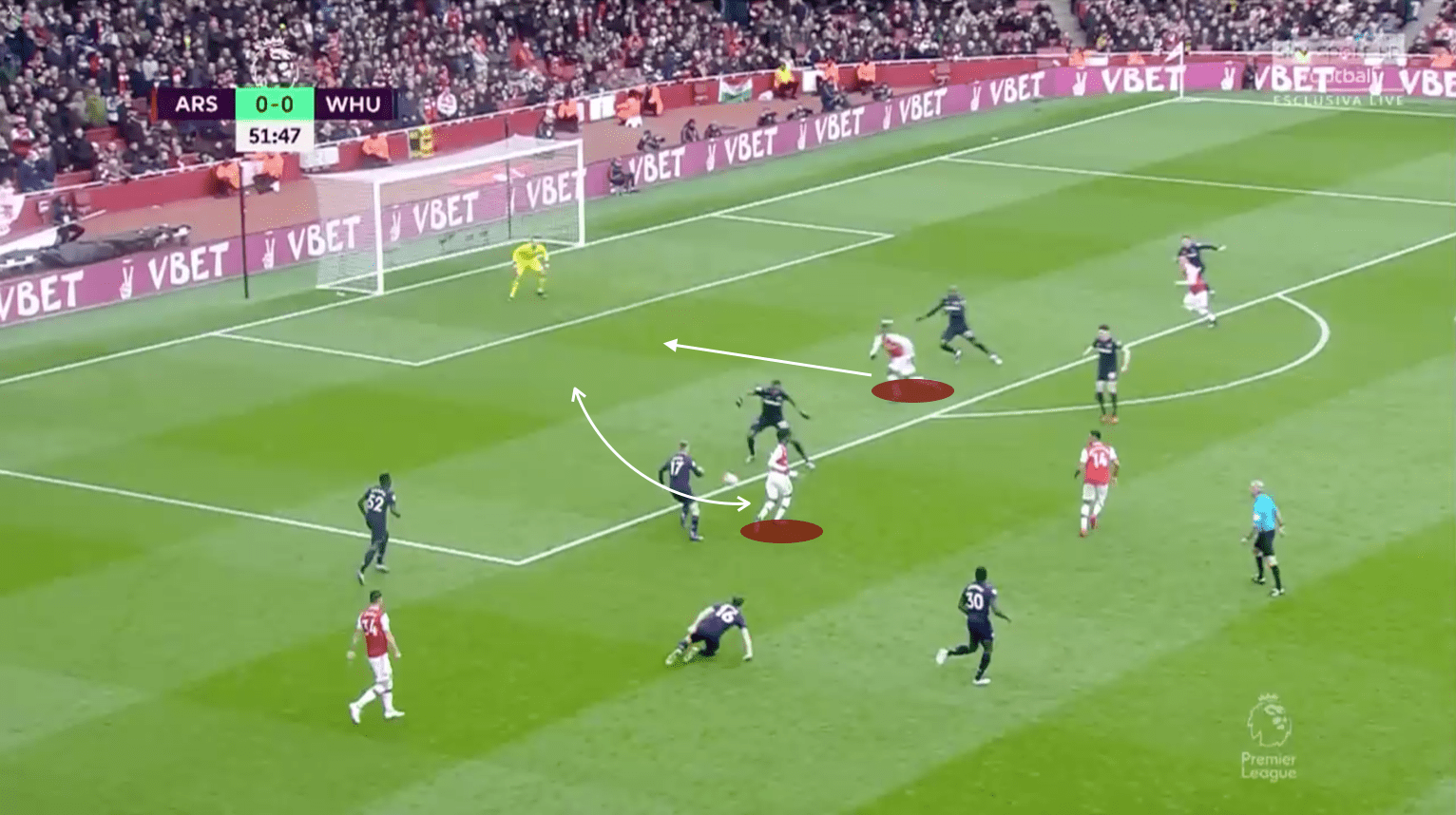
The example against Arsenal above shows that it is not always a bad idea to sit back, and be passive, but there must be a balance. It was working for West Ham at first, but Arsenal continued to push, and eventually had a breakthrough that lead to a shot. Players should try and always have a general idea of when to be passive, and when to be aggressive. By always staying compact in defence, eventually attackers will find a way through, if no pressure is put on them. West Ham struggle with this balance and Moyes should be giving his players more freedom when it comes to this kind of decision making.
Defensive Transitions
West Ham also struggle into transitioning quickly whether it be from attack to defence or from defence to attack. This season, West Ham have only scored one goal from a counter-attack, the lowest in the Premier League. When it comes to transitions, West Ham just do not have the speed, nor the correct positioning when going from attack to defence. This leaves them very susceptible and open to counterattack goals by the opposition.
Similar to before, West Ham struggle specifically when it comes to counterattacks because more often than not, they are just too passive. Key movements when attempting to stop a counterattack should be forcing the ball carrier to the sideline, slow down the opposition’s attack, and block shooting lanes. West Ham cannot get these basics down because of how little aggression they show.
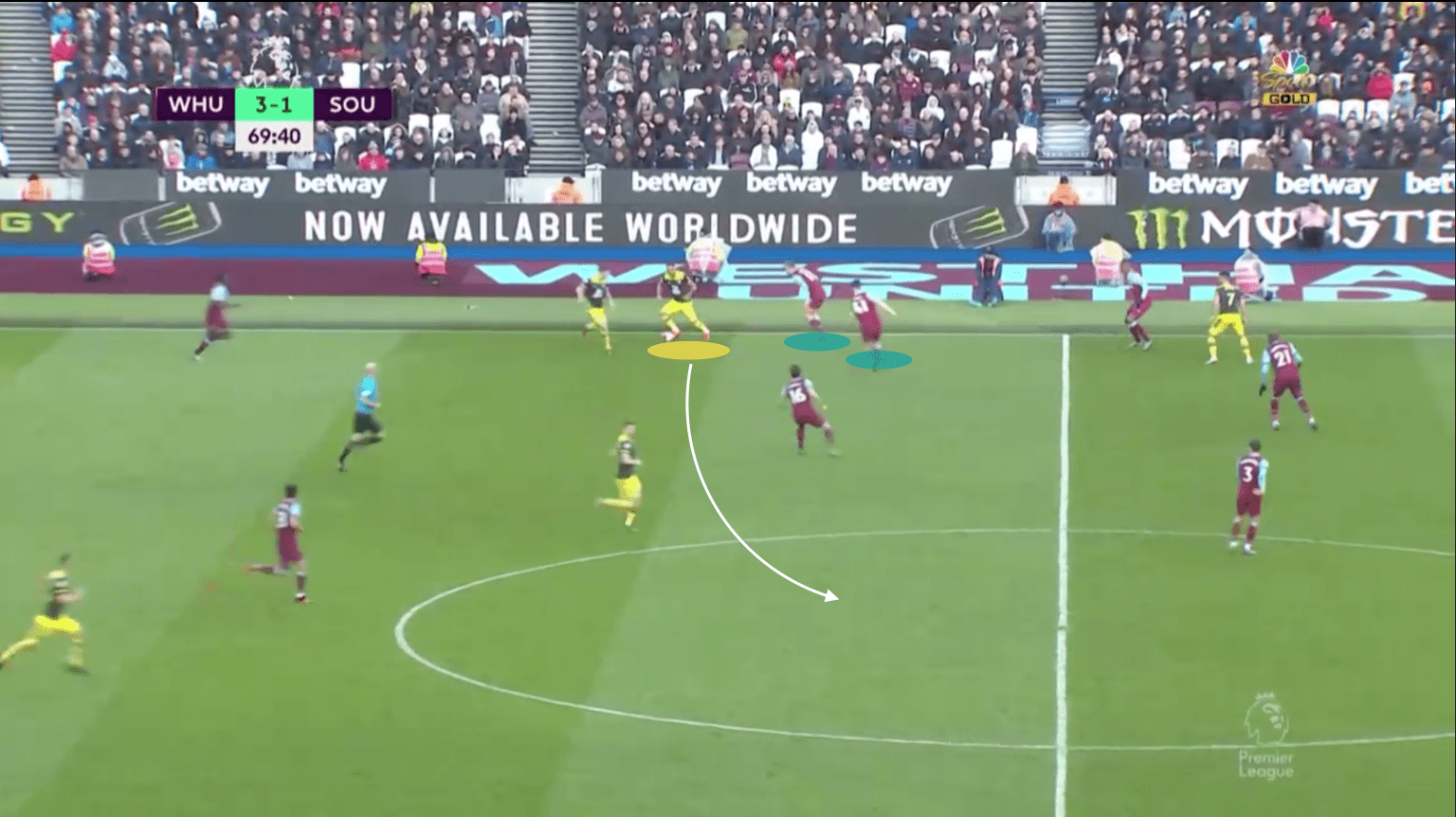
This is a common problem for West Ham that several teams have exploited.
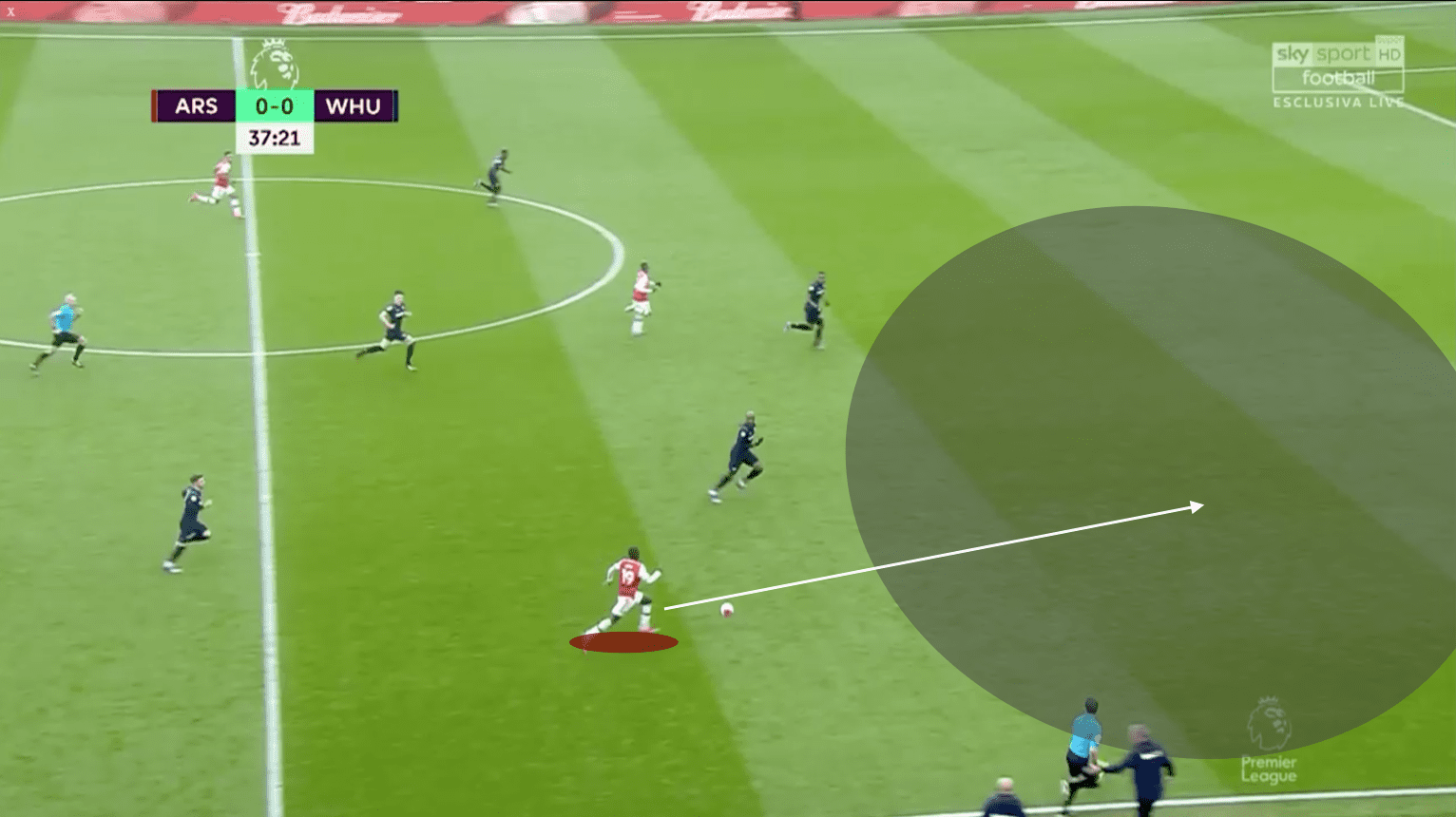
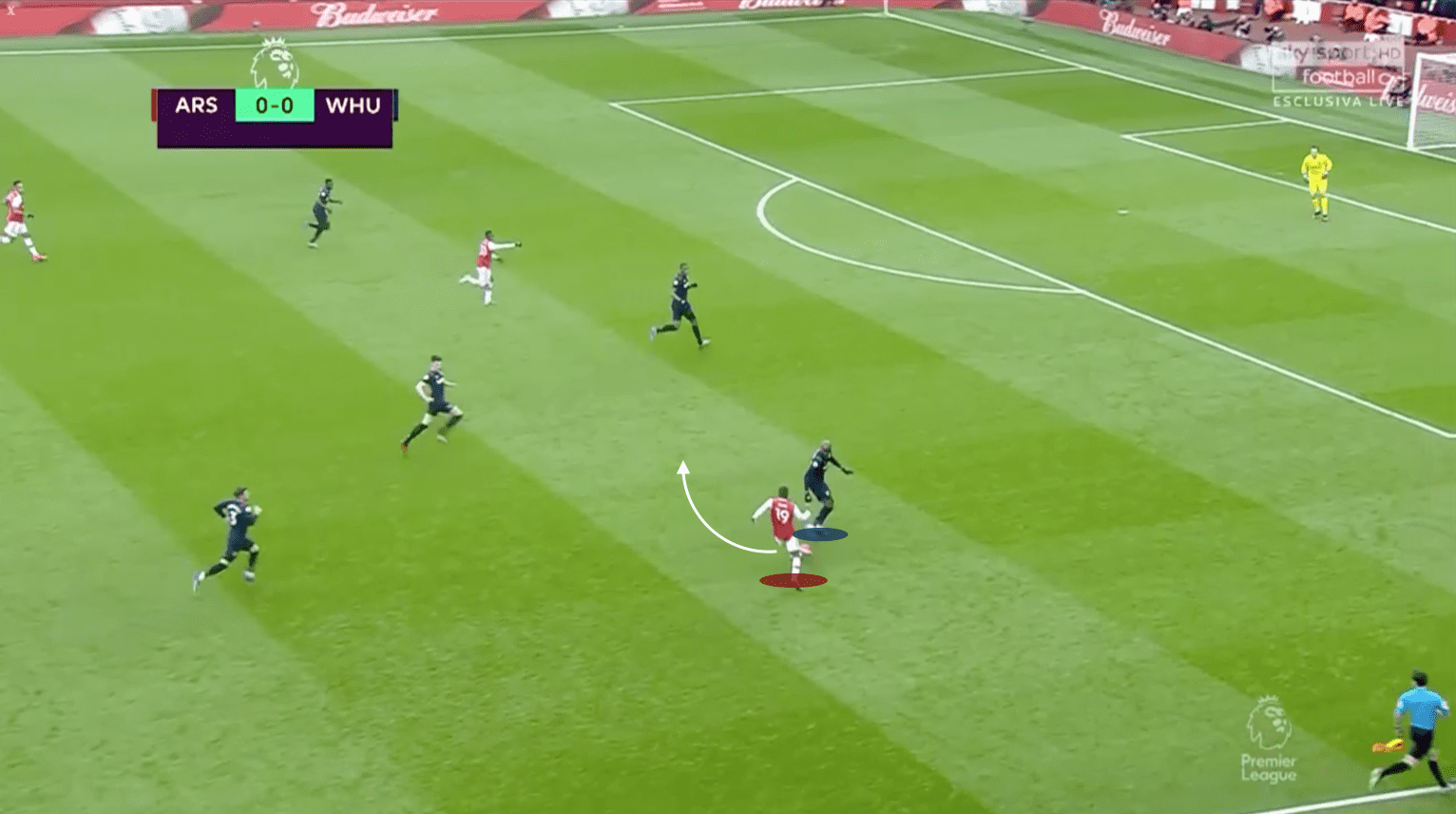

West Ham do also have a bit of an older backline: Aaron Cresswell, Pablo Zabaleta, Angelo Ogbonna are all in their thirties. The idea that footballers instantly can’t compete at the highest level once they hit their thirties is a myth; however, one of the things we see in ageing footballers is the loss of pace. Defenders who hit their thirties have to alter there game in order for them to play at the highest level. If they don’t alter their game based on their loss of pace, their abilities will drop. When looking at the West Ham defenders who lack pace, it is important for them to attempt to do the other things above in order to prevent counterattack goals.
Final Thoughts
West Ham United have a strong squad, with the potential to finish in the top half of the table. But mismanagement from Moyes has only seen them win two Premier League matches since his hiring in December. That is not good enough for the squad that they have. If the FA decide to complete the season, David Moyes needs to find a temporary solution for his side while defending in order to ensure that they do not get relegated. Tactics wise, this analysis shows that he needs to force them to be less passive, and more aggressive in their play. From then, he can look at possible signings that could bolster West Ham’s defensive line for next season.

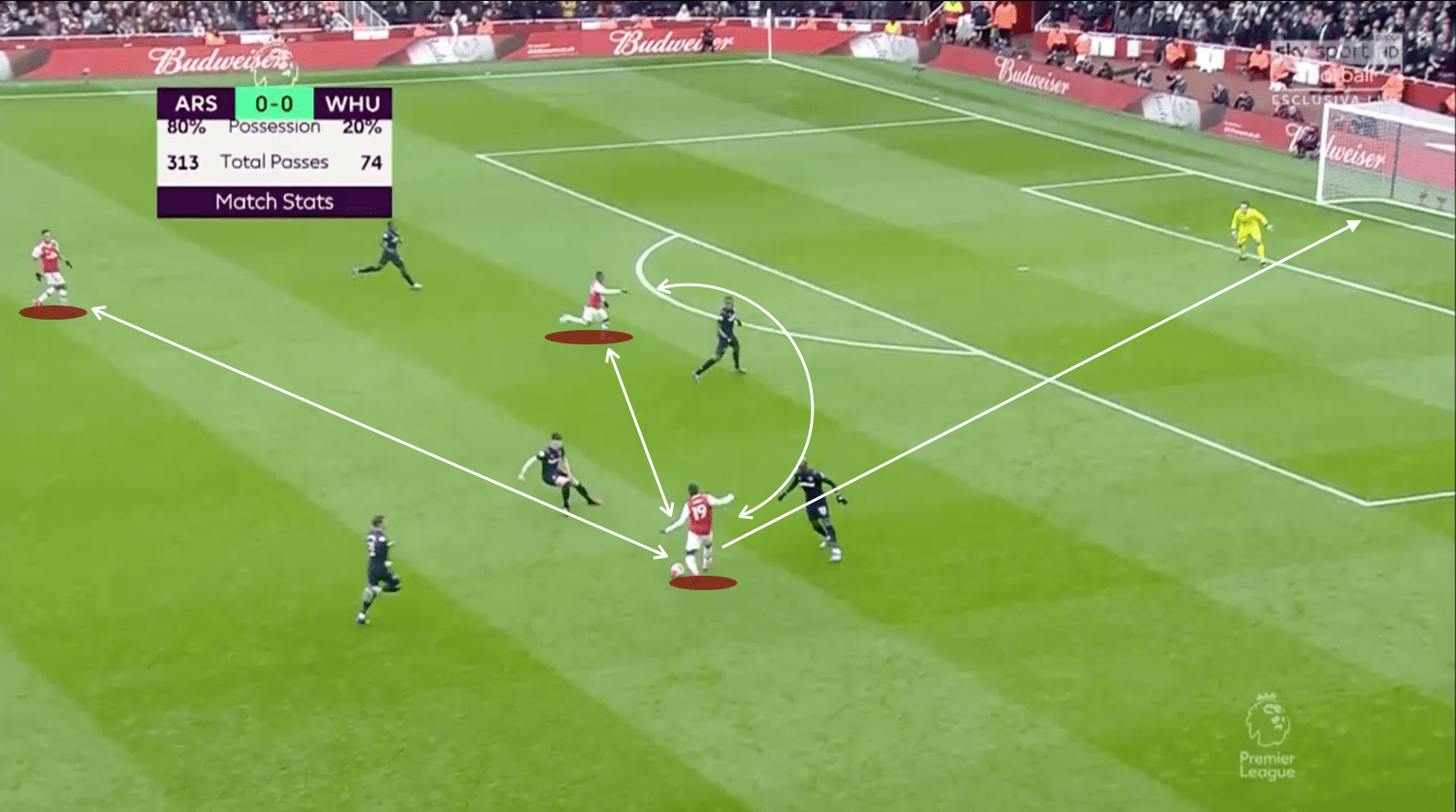




Comments